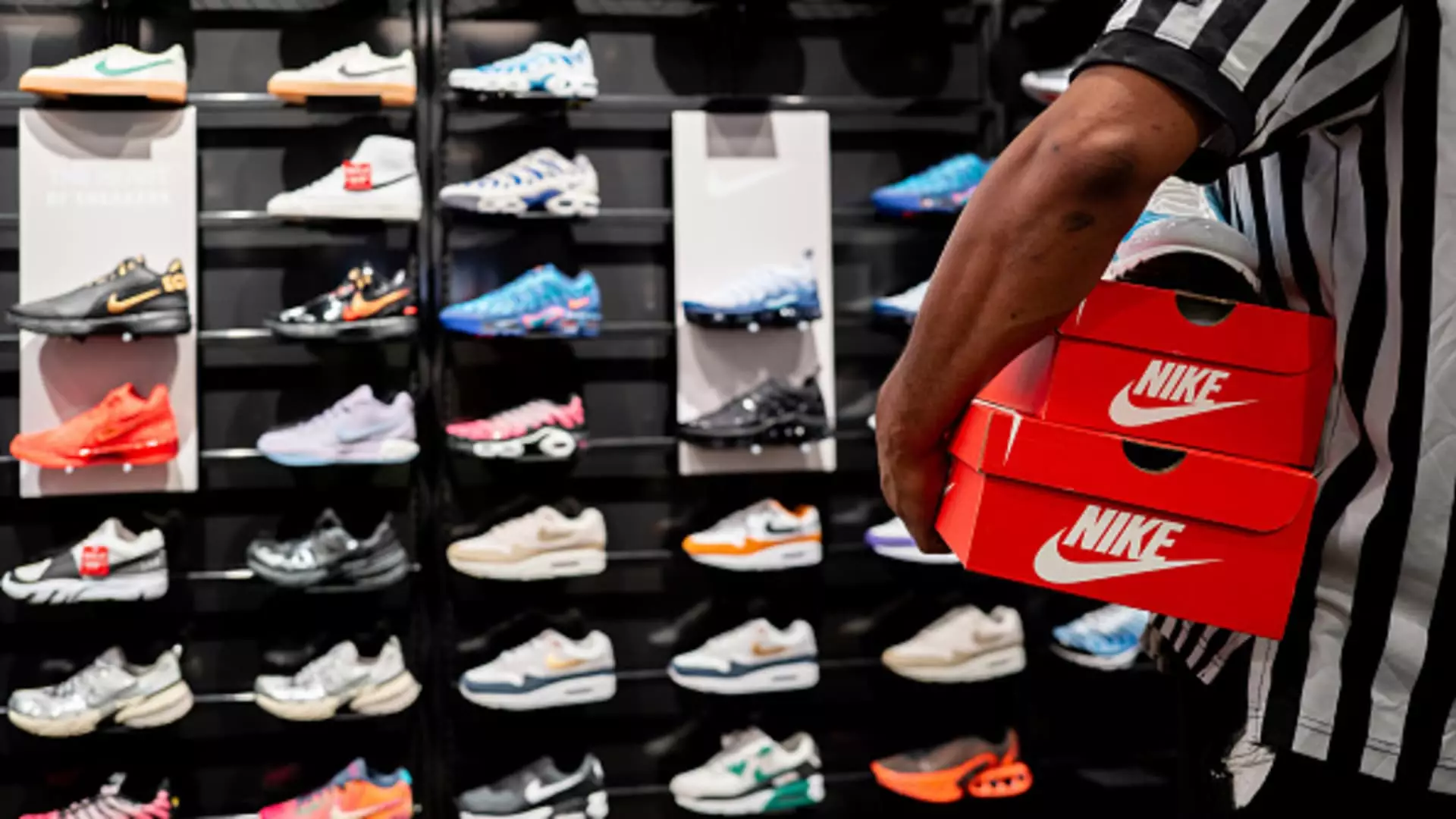As Nike prepares to unveil its fiscal first quarter earnings on Tuesday, the atmosphere among investors is charged with skepticism. The athletic giant’s recent performance metrics suggest a continued decline, with analysts projecting a significant drop in both revenue and profits. Economic headwinds, combined with internal shifts in leadership, have created a challenging backdrop for the world’s largest sneaker company. Fueled by intense competition and sluggish market demand, Nike’s latest earnings call is raising flags of uncertainty.
The consensus estimates from LSEG indicate that investors can expect earnings per share of 52 cents alongside revenue of approximately $11.65 billion. These figures signal a worrying forecast: revenue is anticipated to decline by around 10% compared to the previous year, while profits could plummet nearly 45%. This impending downturn follows a year filled with uncertainty for Nike, marked by the announcement that CEO John Donahoe would be stepping down. His tenure, noted for achieving over 31% growth in annual sales, has nonetheless faced criticism for a perceived lack of innovation and missed opportunities in the competitive landscape.
The announcement of company veteran Elliott Hill as Donahoe’s successor, effective October 14, marks a critical juncture for Nike as it aims to recalibrate its strategy. Hill, who boasts 32 years of experience with the company, has witnessed its growth phases intimately and is expected to drive a renewed focus on innovation and strengthen relationships with key wholesalers. The circumstances surrounding Donahoe’s departure serve as a pivotal reminder of the challenges Nike faces and the necessity for transformative leadership in times of adversity.
Donahoe’s era was characterized by a focus on iconic offerings such as the Air Force 1s and Air Jordans, which, while commercially successful, raised questions about Nike’s ability to innovate and create new products that resonate with evolving consumer preferences. Analysts have pointed out the need for a robust pipeline of innovative merchandise, a call that may have ultimately contributed to Donahoe’s exit. Hill’s challenge will not only be to reinvigorate the innovation process but also to restore morale within a workforce that has recently faced layoffs and cultural discontent.
The wider economic climate is proving particularly arduous for Nike as consumer spending on discretionary items, such as apparel and footwear, has experienced a slowdown. Projected growth for U.S. footwear sales is expected to be modest, at around 2% for 2024, a stark comparison to the consistent growth Nike previously enjoyed. Even within the athletic footwear segment, projected growth stands at a relatively modest 5.6%, as noted by Euromonitor.
Nike’s performance is further complicated by its exposure to the Chinese market, which ranks as the company’s third-largest revenue driver. As the company contemplates its earnings report, insights into performance in China may reveal trends that indicate both the health of local economies and broader brand strength in the region. Despite recent stimulus measures introduced by China’s central bank aimed at bolstering economic activity, the uncertain climate will test Nike’s resilience as it moves forward.
Stock performance reflects the company’s struggles, with shares of Nike declining by 19% in 2024, significantly contrasting with the S&P 500’s 21% gains. Investors are understandably cautious, examining not only the immediate earnings report but also the broader implications of leadership changes and potentially lackluster innovation strategies. As the anticipated earnings call approaches, both shareholders and industry analysts will be closely monitoring key indicators that could portend Nike’s trajectory moving forward.
As Nike readies itself for a potentially underwhelming earnings report, the emphasis will be on assessing both the impact of new leadership and the company’s strategies for navigating a challenging market landscape. Whether Elliott Hill can steer the company back to its innovative roots while rejuvenating a beleaguered workforce will be crucial for the brand’s future and its ability to remain a dominant force in the athletic footwear industry.

